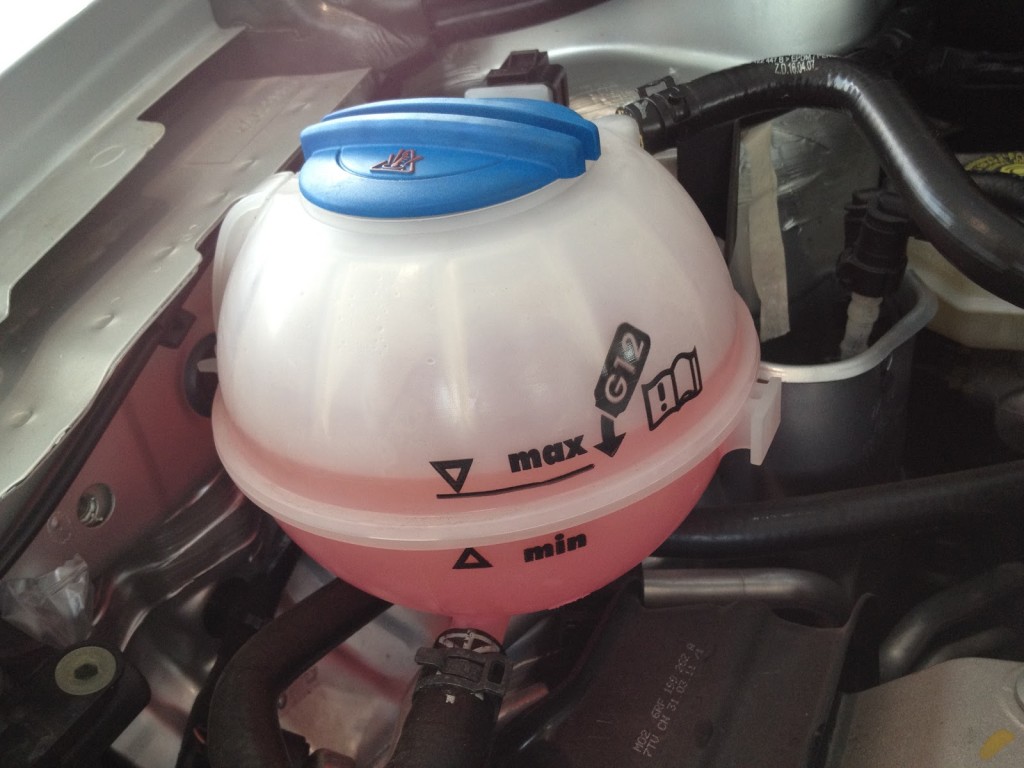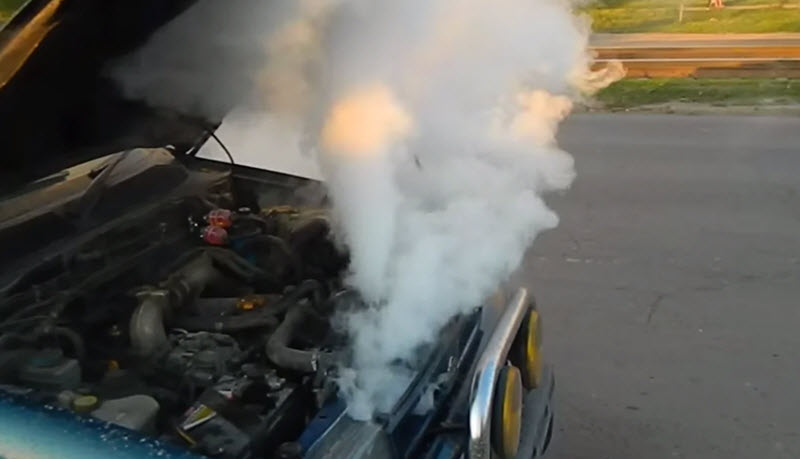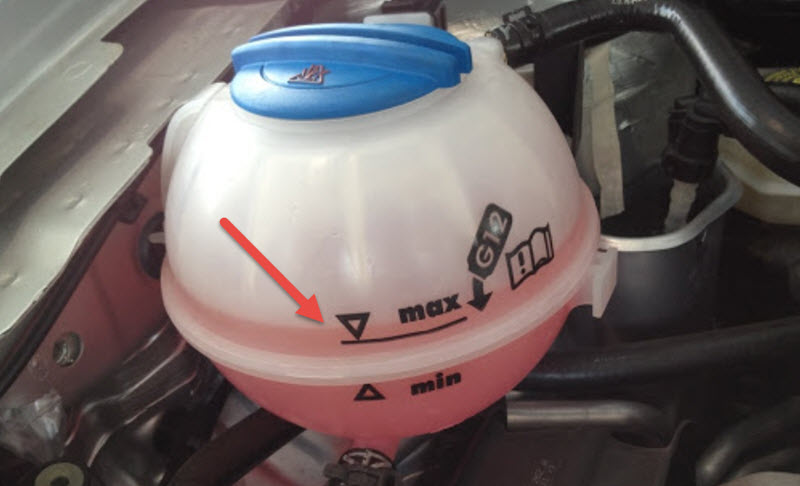
How to check the level of antifreeze
Content
The cooling system for a car engine is vital, without it or if it does not function properly, overheating will occur very quickly, the unit will jam and collapse. The system itself is quite reliable, but only if the level of antifreeze is regularly monitored and there are no smudges. The required amount of liquid is determined by the level in the transparent expansion tank of the radiator in the engine compartment.

The Importance of Checking the Coolant Level
During operation, antifreeze is under excess pressure. This is due to the fact that its boiling point under normal conditions is only slightly different from pure water.
The average value of the thermal regime of the engine does not correspond to local data in the most loaded places, such as the cylinder walls and the inner cooling jacket of the block head. There, the temperature can be much higher than necessary for boiling.
As pressure increases, the boiling point also rises. This made it possible to maintain average values on the verge of the onset of vaporization. The higher the temperature of the engine, the greater its efficiency, you have to balance on the verge. But the pressure increases automatically, which means that the antifreeze works normally, without vaporization and the associated deterioration in circulation and heat transfer.

All these conditions will be met if the system is completely sealed. In the event of a violation, the pressure will drop sharply, the liquid will boil, and the motor will quickly overheat. An important role is also played by the total heat capacity of all antifreeze in the system, and hence its quantity.
There are enough opportunities for leaks:
- evaporation and emissions due to the opened safety valve in the system, which is quite possible under heavy loads on the motor in conditions of insufficient airflow, for example, in heat, on a rise with the air conditioner on and other energy consumers;
- slow leaks from the leaky main radiator with its thin numerous aluminum tubes and glued plastic tanks, the heater radiator is no better in this respect;
- weakening of the fit and hardening from old age of the plastic and rubber hoses of the system;
- the flow of antifreeze into the combustion chambers through point damage to the cylinder head gasket or cracks in parts;
- cracking from old age of hoses and plastic pipes, thermostat housing;
- destruction of the water pump seal or the gasket of its housing;
- corrosion of heat exchangers and the stove tap, where it is available.
Both on old and fresh cars, the level of antifreeze has to be monitored no less than other working fluids, oil, brake and hydraulic. This is prescribed by the daily technical control operations.
How to control the level of antifreeze in the system
Check the level in accordance with the operating instructions for the car. But there are also general considerations.
To the cold
The engine must be cool before checking. Then the labels on the expansion tank will give the correct information. In principle, the level can be anything between the minimum and maximum marks on the wall of the transparent tank.


Ideally - approximately in the middle, an excess is also harmful. It is important to track not the millimeters of this level, but the approximate dynamics of its change, which can show that the liquid is leaving, which means you need to look for the cause.
It can also leave when the system is completely tight, but this happens very slowly, the level does not change for months and years.
Hot
It will be a big mistake to carry out control on a hot, just stopped engine, especially when it is running.
This is due to a number of reasons:
- the heated liquid, and there is quite a lot of it in the system, is expanded, which means the level will be deceptively high;
- The formation of vapor locks in the system will be even more misleading, the antifreeze does not boil, but the pressure necessary for this is created by the formation of gas bubbles in the hottest parts of the shirts, especially immediately after the engine stops, when the circulation from the water pump stops and the parts are at a very high temperature;
- the release of gas bubbles makes it difficult to read the correct readings on the level scale.


It is even more dangerous to open the reservoir cap when the engine is hot. A sudden loss of pressure will cause the release of steam and hot liquid, which is fraught with burns.
What happens if you fill in antifreeze at the wrong level
Too high a liquid level will leave little room for thermal expansion, which will at best cause the steam safety valve to trip and at worst damage radiators, hoses and fittings.
The lack of antifreeze will lead to malfunctions in the system, which already does not have much performance reserves in hot weather under load. Therefore, you should be guided strictly by factory marks and with a cooled engine.


How to add coolant to the expansion tank
First of all, you need to make sure that the car is on a level surface. Top up should be only the same composition that is available in the system. Not all antifreezes allow mixing.
The engine is allowed to cool, after which the expansion tank cap is removed and fresh fluid is added. In small quantities, the use of distilled water is allowed if there is confidence in the tightness of the system, that is, the consumption occurred for evaporation, and not for leakage.
After adding the liquid to the norm, the engine must be warmed up, preferably by a test drive, to operating temperature, and then cooled again. It is possible that air plugs will leave the system and liquids will have to be added.


Watch this video on YouTube
Can antifreeze be mixed
All coolants are divided into several additives that are fundamentally different in terms of the mechanisms of operation of additives and the base material. These are formulations with silicone bags, carboxylate organic, and also mixed.
Depending on the concentration of one or another, they are called hybrids and lobrids. In a separate group, antifreezes based on polypropylene glycol are distinguished, which are more environmentally friendly in production.
Since manufacturers do not always accurately indicate the relationship of a product to a particular group, it is better not to mix liquids. But if there is confidence in the designations and tolerances, then you can add the composition of the same group. Cross-matching is not allowed, although sometimes it is carried out without any special consequences.
You should not just add groups G12, G12 +, G12 ++ to modern antifreezes, especially to propylene glycol G13, outdated and cheap G11 (they are often indicated that this is antifreeze, although they have nothing to do with real antifreeze, long out of production) . And in general, do not use incomprehensible liquids with an eloquently low price.
It should be remembered that if a coolant with special properties, such as Long Life or other expensive products of original origin and extended service life, is poured into a modern car, then when inexpensive aftermarket compounds are added to it, the antifreeze will be damaged.
He will be able to work for some time, but soon he will have to be replaced with a flush. Additive conflict is very real.